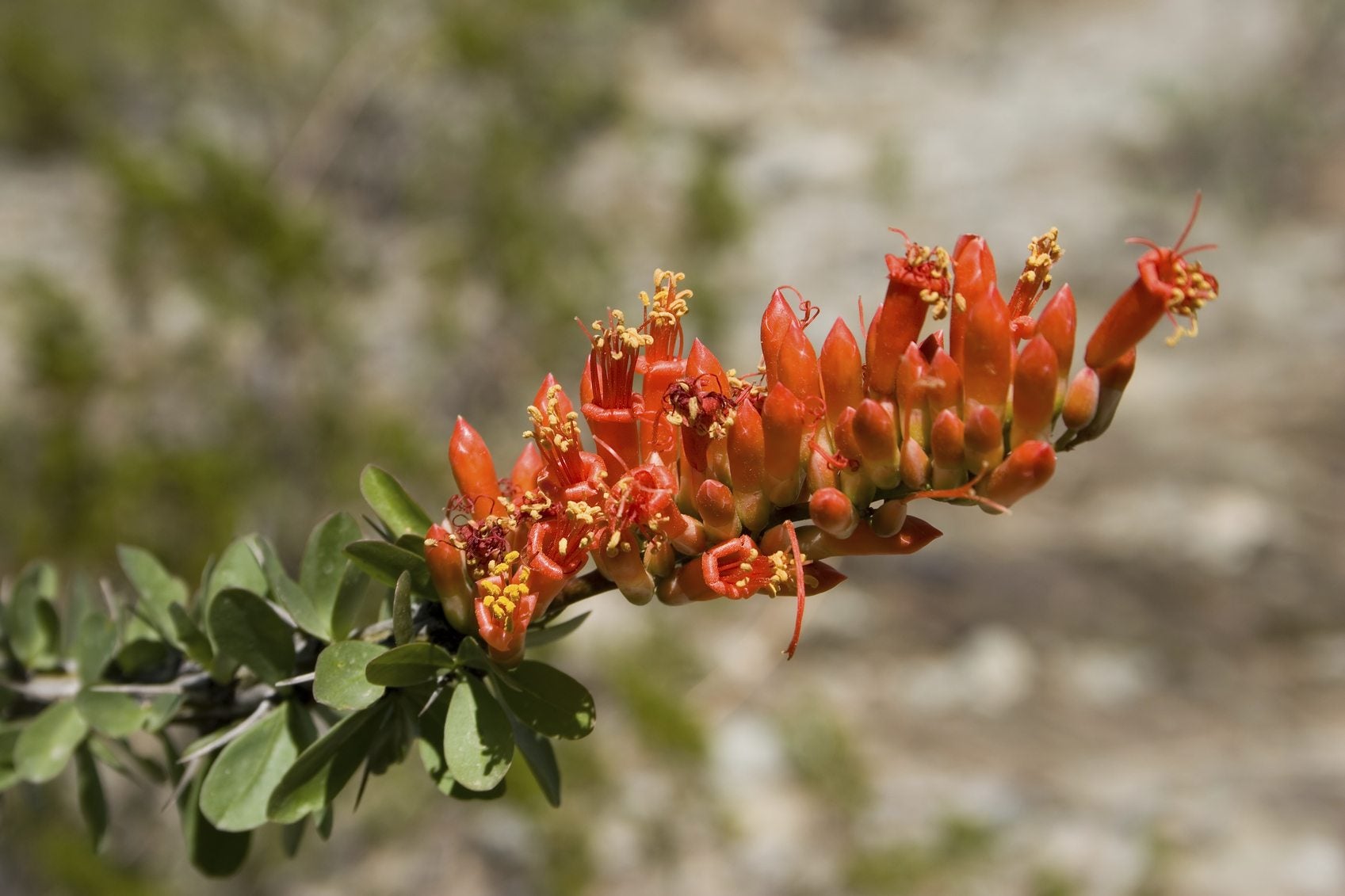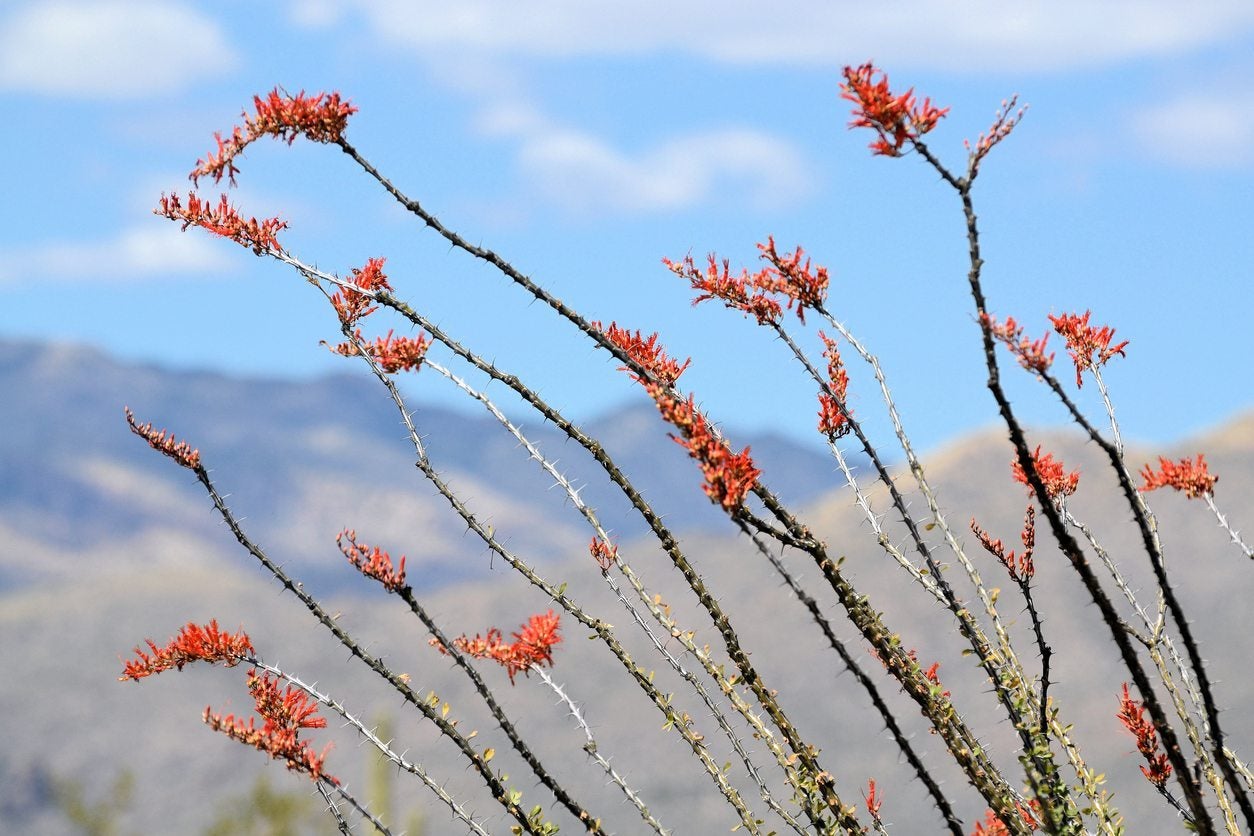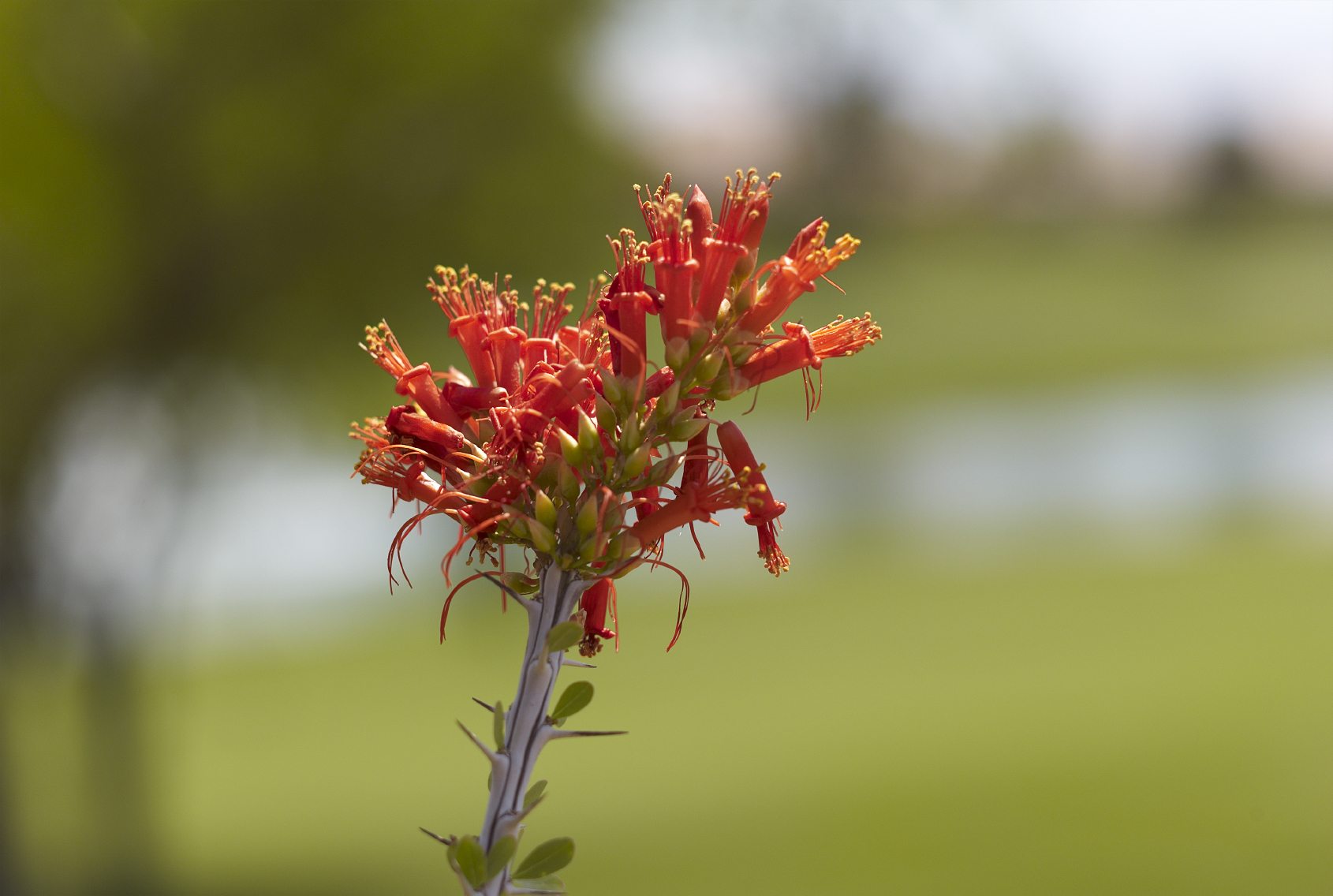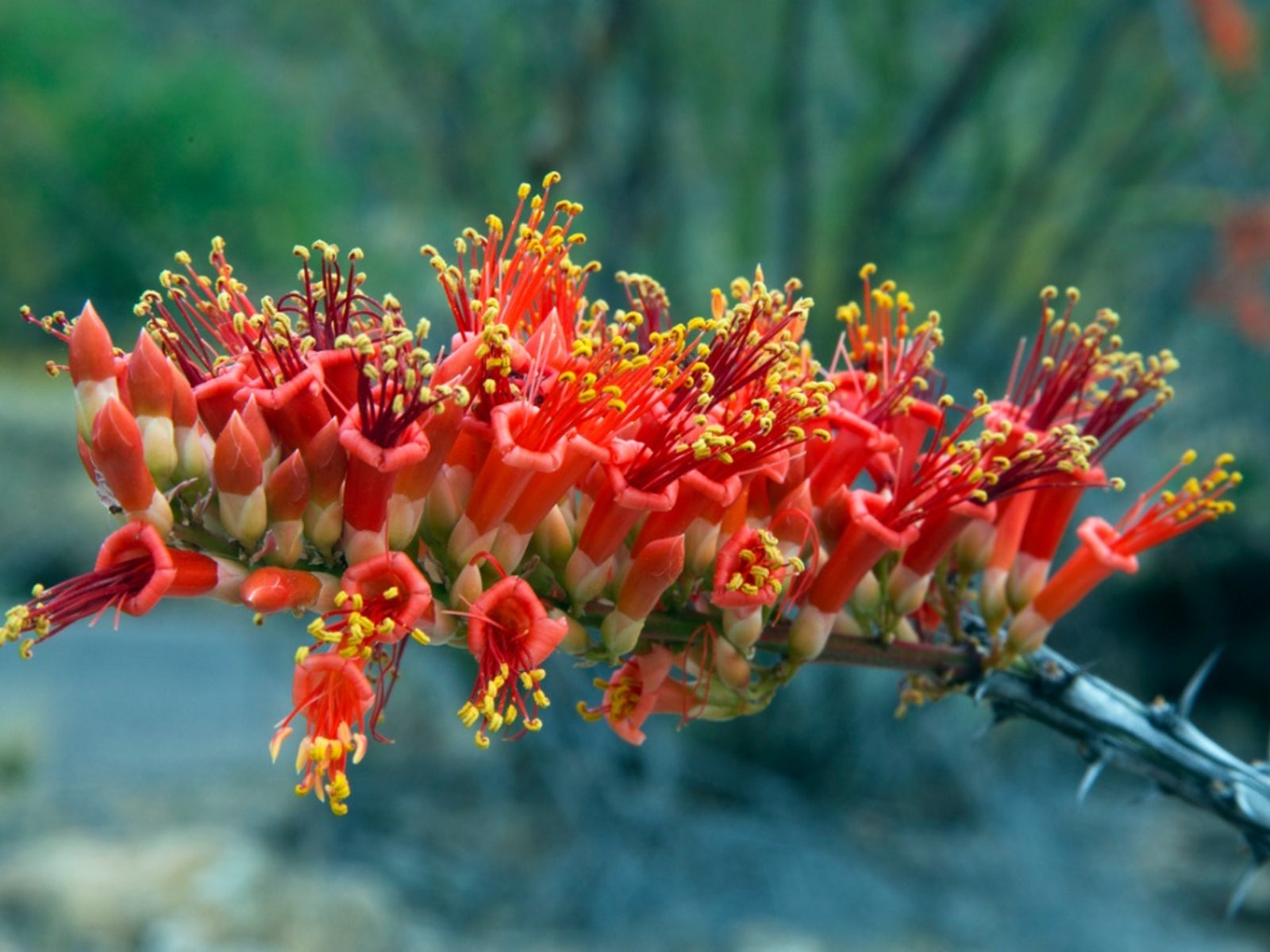Ocotillo In Containers – Caring For Potted Ocotillo Plants


If you’ve visited northern Mexico or the southwestern corner of the United States, you’ve likely seen ocotillo. Dramatic plants with statuesque, whip-like stems, ocotillos are difficult to miss, especially in springtime when the long, thorny canes are tipped with spikes of fiery red, tube-shaped blooms. Although ocotillo is usually an in-ground plant, there’s no reason you can’t grow ocotillo in containers. If this idea strikes your fancy, read on to learn about growing ocotillo in a pot.
How to Grow Ocotillo Plants in Containers
Ocotillo (Fouquieria splendens) is a desert plant that grows in U.S. Department of Agriculture plant hardiness zones 8 through 11. If you live in a cooler climate, bring the ocotillo indoors during fall and winter. The best ocotillo potting soil is a fast-draining potting mix such as a product formulated specifically for cactus and succulents. Plant the ocotillo in a container with at least one drainage hole. Don’t select an overly large container, as excess potting soil is likely to cause this succulent plant to rot. A pot just slightly larger than the root ball is ideal. The plant may become top-heavy, so use a container with a solid, heavy base to prevent tipping.
Caring for Potted Ocotillo Plants
Water lightly as necessary to keep the soil moist – but only until the roots are established. Thereafter, be extremely careful about overwatering ocotillo in containers. Like all succulents, ocotillo is prone to rot in damp soil. As a general rule, water only when the top 2 to 3 inches (5 to 7.6 cm.) of soil is dry. Never allow the pot to stand in water. Water indoor ocotillo sparingly when the plant is dormant during the winter months. Watering too little is always better than overwatering, and once a month is usually sufficient. Place the container where the ocotillo is exposed to full sunlight. Without bright sunlight, ocotillo plants tend to become leggy and produce fewer blooms. Feed ocotillo in containers sparingly three times per year, using a balanced, general-purpose fertilizer. Withhold fertilizer during the winter months. Repot ocotillo into a container one size larger whenever the plant is rootbound, usually indicated by roots growing through the drainage hole. Spring is the best time for this task.
Gardening tips, videos, info and more delivered right to your inbox!
Sign up for the Gardening Know How newsletter today and receive a free copy of our e-book "How to Grow Delicious Tomatoes".

A Credentialed Garden Writer, Mary H. Dyer was with Gardening Know How in the very beginning, publishing articles as early as 2007.
-
 Types Of Tomatoes Explained: Explore The Many Wonderful Shapes, Colors, Flavors, & Best Uses
Types Of Tomatoes Explained: Explore The Many Wonderful Shapes, Colors, Flavors, & Best UsesThe world of tomato varieties is vast and fascinating. Learn about the key types to grow in your garden, tailored to your preferences and space.
By Amy Grant
-
 Try The Trend – Turn Any Bed Into A Keyhole Garden With This Clever In-Ground Composter
Try The Trend – Turn Any Bed Into A Keyhole Garden With This Clever In-Ground ComposterKeyhole gardening is an efficient and sustainable practice that saves space. Get started on this DIY project quickly and easily with an in-ground composter.
By Bonnie L. Grant
-
 Propagating Ocotillo Plants – How To Propagate Ocotillo Plants
Propagating Ocotillo Plants – How To Propagate Ocotillo PlantsWant some good news? Ocotillo propagation is surprisingly easy, but the bad news is that rooting seems to be rather hit or miss. If you're interested in giving it a try, click here to learn the basics of propagating ocotillo plants for your garden.
By Mary H. Dyer
-
 Why Is My Ocotillo Not Blooming – How To Get Ocotillo Flowers
Why Is My Ocotillo Not Blooming – How To Get Ocotillo FlowersOcotillos are notable for their bright red flowers and whip-like stems. If you're wondering, "Why is my ocotillo not blooming?", click this article for some possible reasons and solutions to make this desert wonder fully flower.
By Bonnie L. Grant
-
 Ocotillo Care: Tips On Planting Ocotillo In The Garden
Ocotillo Care: Tips On Planting Ocotillo In The GardenThe ocotillo plant is a desert shrub that produces a spectacle of bright, pink flowers on whip-like canes. It is often called ocotillo cactus but is not truly a cactus. Learn more about this plant and how to grow it here.
By Bonnie L. Grant